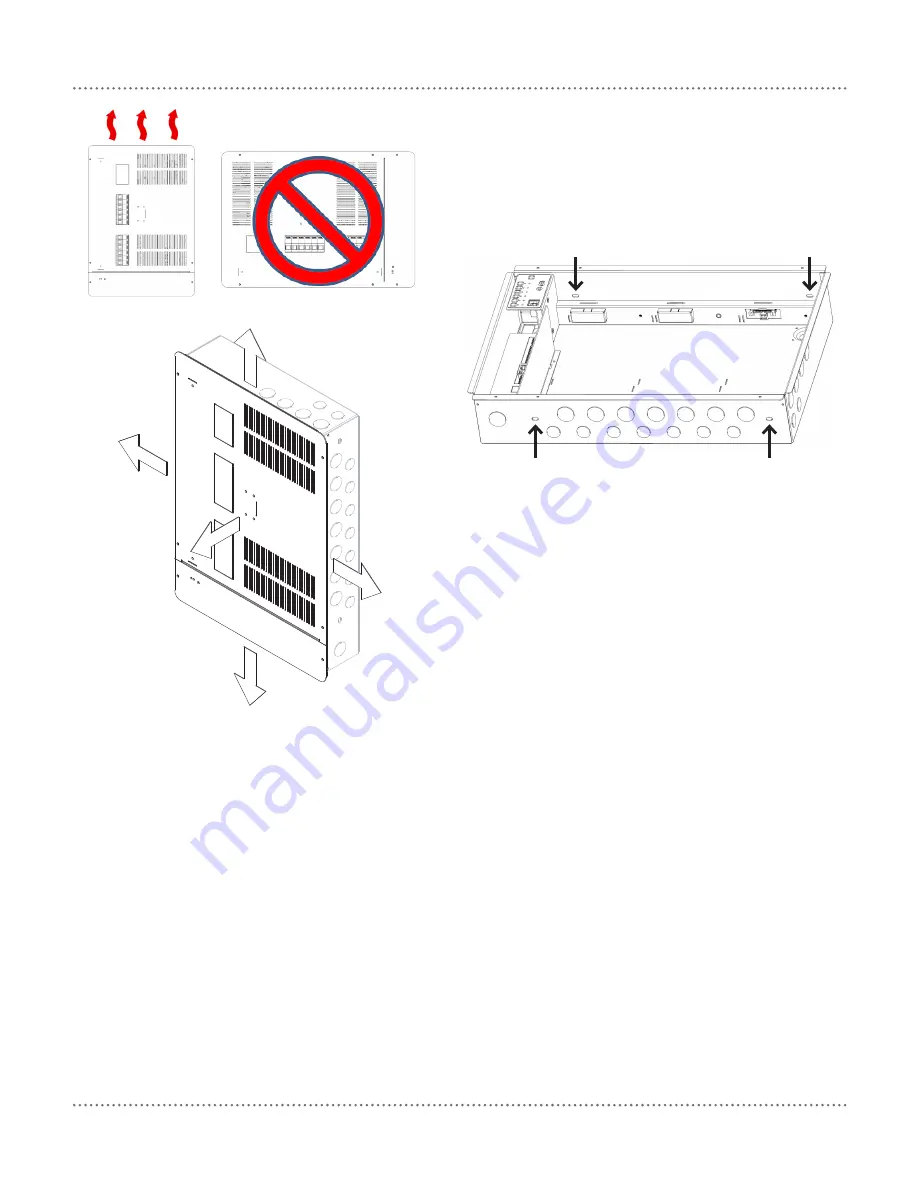
4
DMC2 Installation Instructions Rev 03
Mounting
For surface mounting, four mounting points have been
provided. Refer to the location of the mounting points in the
dimension drawings on page 7 of this document.
For recess mounting, four holes suitable for M6 (1/4”)
fasteners have been provided on side walls as shown below.
Minimum spacing between studs is 380mm (15”), minimum
mounting depth 103mm (4.1”)
Allow for Cable Entry
Supply and load cables can enter the enclosure through
knockouts at the top, side or back. An alternative method
is to stand the enclosure off from the mounting surface by
mounting it on a cable tray or a Unistrut-style product.
The control cables enter at the bottom of the enclosure.
Control cables should never be run in the mains voltage
sections of the enclosure.
Energizing the Device
If it is necessary to energize load circuits for test purposes
before any control cables are connected, it is acceptable
to replace the top cover and energize the device, as the
default factory programming is to have all channels set
to 100% output. Use the manual override keypad on the
communication module to control individual channels.
This device should be de-energized before terminating the
control and data cables.
Select a suitable location
This device is designed for indoor use only. If
installing in an outdoor location, the DMC2 must
be housed in a suitable well-ventilated enclosure.
Choose a dry location that will be accessible after the
installation is complete. To ensure sufficient cooling,
the DMC2 must be mounted vertically, as shown
above. The DMC2 requires a minimum air gap of
200mm (8”) around the front, sides, top and bottom of
the front cover. This air gap is also required to ensure
serviceability of the DMC2 without complete removal
from the mounting surface.
The device may emit some audible noise during
operation. Take this into account when deciding the
mounting location.
Ensure no dust or other debris enters the device during
installation. Do not leave the front cover off for any length
of time. Excessive dust and dirt can impede the cooling of
internal components.


























